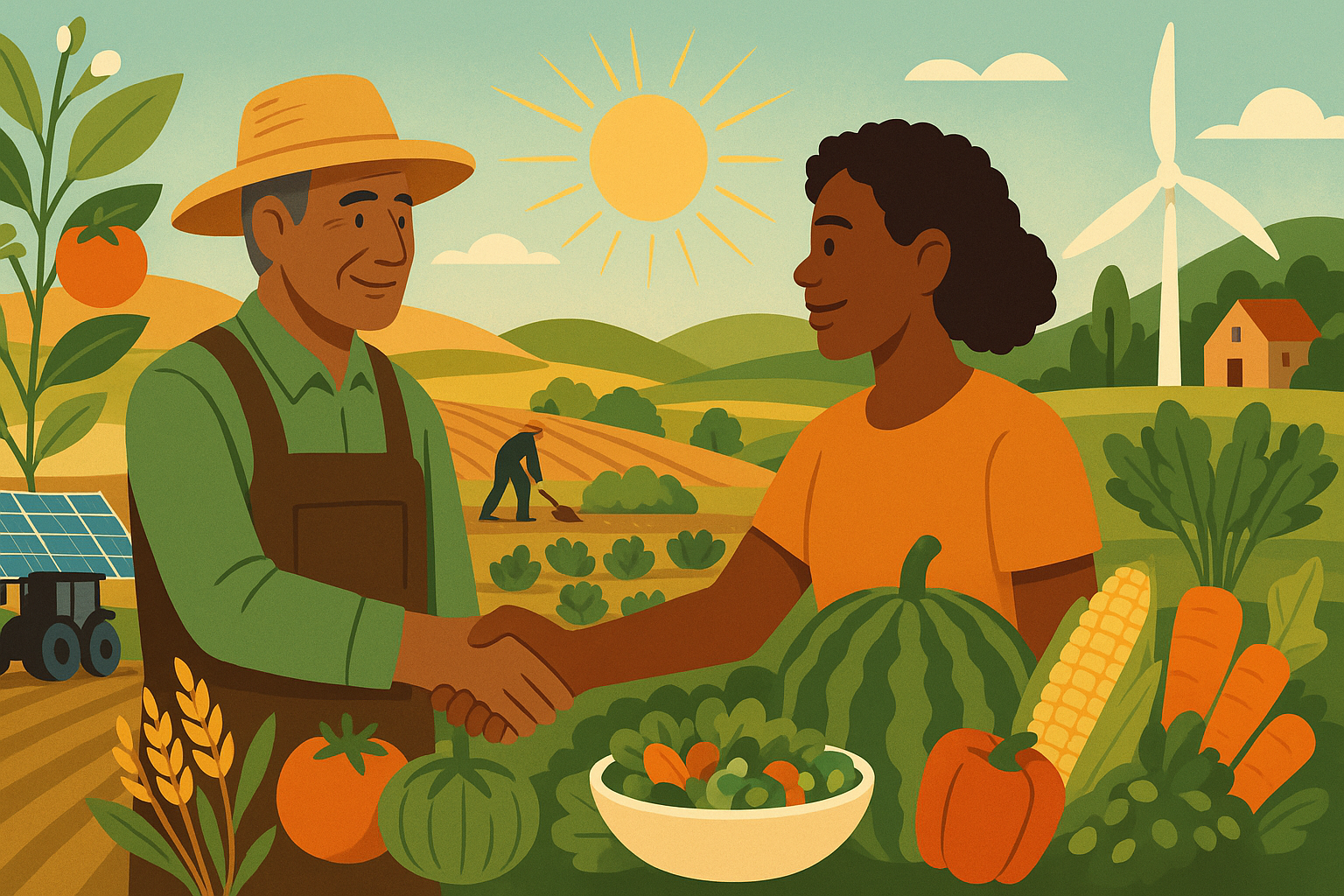
PANAJI
World Food Day, observed every year on 16 October, is a reminder that food is more than just a necessity—it represents health, dignity and hope. The 2025 theme, “Hand in Hand for Better Foods and a Better Future,” urges collective action so that everyone can access safe, nutritious and affordable food while protecting the planet that sustains us. The idea is simple: no single group can fix the food system alone, but everyone has a part to play.
Working together for better food
Today’s challenge is not about producing more food, but better food—food that nourishes rather than merely fills, grown fairly and sustainably, without depleting soil, water or biodiversity. Climate change, conflicts and price shocks have made it harder for families to maintain balanced diets. The focus on “better foods” brings nutrition back to the centre of decisions—from government policies and farm subsidies to what retailers stock.
“Hand in hand” also means cooperation across the entire food chain. Farmers and fishers need fair access to seeds, advice and markets. Local governments can strengthen farmer producer groups and self-help collectives. Retailers and companies can cut salt, sugar and trans fats, and label clearly. Public institutions like schools and hospitals can buy locally grown produce—millets, vegetables, pulses and fruit—so that public spending supports local nutrition and livelihoods.
Reducing food loss and waste is another shared task. In developing regions, much is lost after harvest due to poor storage or transport. Simple innovations—solar dryers, airtight bags and packhouses—can help. In cities, smaller portions, clearer date labels and food recovery networks can save tonnes of food and cut emissions. Every kilogram saved protects farmers’ income and supports the environment.
Making diets sustainable and affordable
Sustainable diets need not be expensive. Pulses, millets, vegetables and local fish are nutrient-rich and climate-friendly. Reviving traditional recipes and promoting local produce can make them desirable and accessible. Chefs, influencers and the media can help by making healthy eating fashionable, while shops and restaurants should prioritise wholesome staples over ultra-processed snacks.
Technology, when used wisely, can make the food system more inclusive. Tools like weather dashboards, soil cards and digital marketplaces help farmers plan better and sell directly to buyers. Start-ups can link fishers and farmers to cold storage or markets. The goal is not technology for its own sake, but tools that reduce risk, increase incomes and make good food easier to reach.
Children, cities and finance
Children and youth must be central to this effort. School feeding programmes that buy local food improve learning and support farmers. School gardens teach children how food grows. Nutrition lessons can focus on simple habits—balanced meals, handwashing, and label reading—so children pass these values on at home.
Cities too play a vital role. As urban populations grow, food travels further. Governments can support farmers’ markets, protect local supply chains, and give vendors safe spaces. Clean water, sanitation and waste segregation all improve food hygiene. Better transport and cold storage make fruits and vegetables more affordable.
Finance ties everything together. Timely crop insurance, credit for women’s groups and investment in rural storage make farming more resilient. Incentives should reward practices that conserve water and soil—like intercropping, mulching and organic methods—so sustainability becomes a source of strength, not a burden.
Small steps, shared future
Each of us can help. Buy seasonal, local produce—millets, pulses, greens and fruit. Plan meals to avoid waste and compost what remains. Support fair businesses, ask for healthier school meals, and thank local farmers. Small acts, when multiplied, transform food systems.
The 2025 theme reminds us that our wellbeing is connected. Farmers cannot thrive if consumers chase only the cheapest calories. Consumers cannot eat well if policy ignores nutrition. The planet cannot cope if farming extracts more than it restores. “Hand in hand” is a pact—between rural and urban, producer and consumer, public and private, young and old.
If we honour that pact by choosing better foods and supporting fairer systems, we move closer to a world where every meal nourishes the body, every harvest sustains the planet, and every community grows stronger together. The better future begins not in conferences, but in our kitchens, schools and farms—one plate, one choice, and one partnership at a time.